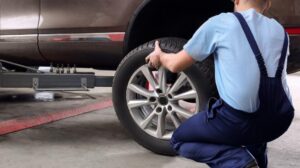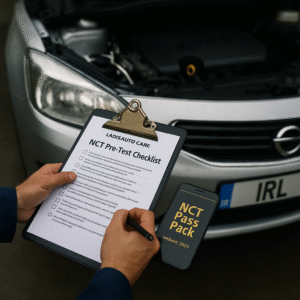Introduction: Understanding Loose Steering
Loose steering is a common issue that many drivers may encounter, and it can significantly impact both safety and vehicle performance. When the steering system does not respond accurately to driver inputs, it can make the vehicle difficult to control, especially at higher speeds or during emergency maneuvers. This lack of precision can lead to dangerous situations on the road, making it essential to address any signs of loose steering promptly.
A range of factors can contribute to loose steering, each requiring a different approach for diagnosis and repair. Among the most common causes are worn tie rods, a failing steering rack, and issues with the power steering system. Worn tie rods can result in a slack feeling in the steering wheel, while a failing steering rack may cause inconsistent steering responses. Problems within the power steering system, such as fluid leaks or a malfunctioning power steering pump, can also lead to a loose steering sensation.
Identifying the root cause of loose steering is crucial for implementing the correct solution. Ignoring these symptoms can lead to further damage and higher repair costs down the line. Additionally, unresolved steering issues can compromise the vehicle’s alignment, leading to uneven tire wear and reduced fuel efficiency.
In this article, we will delve into the common causes of loose steering and provide actionable solutions to help you diagnose and fix these issues. We will also link to products that can assist in the repair process, ensuring that you have the right tools and information to restore your vehicle’s steering performance. By understanding the potential dangers and addressing them promptly, you can maintain a safe and enjoyable driving experience.
Worn Tie Rods: Symptoms and Solutions
The tie rods play a crucial role in your car’s steering mechanism, connecting the steering rack to the wheels. Their primary function is to ensure that the wheels are aligned and respond accurately to the driver’s steering inputs. When tie rods are worn, they can significantly impact the steering performance, leading to a loose steering feel that can compromise driving safety.
One of the most common symptoms of worn tie rods is uneven tire wear. As the tie rods deteriorate, they can cause misalignment, making the tires wear out unevenly and more quickly than usual. Another telltale sign is a shaky or vibrating steering wheel, especially when driving at higher speeds. This occurs because the worn tie rods no longer provide the necessary stability and control, causing the wheels to wobble.
Inspecting tie rods can often be done as a DIY project. To check the condition of your tie rods, you can start by lifting the front end of your vehicle and securing it with jack stands. With the wheels off the ground, grasp each front tire at the 3 and 9 o’clock positions and attempt to wiggle it. If you notice excessive play or movement, this could indicate worn tie rods. Additionally, a visual inspection can reveal if the rubber boots covering the tie rods are cracked or damaged, which is another sign of wear.
Replacing worn tie rods is a task that many car owners can handle themselves with the right tools and guidance. However, if you’re not comfortable performing this repair, it’s advisable to consult a professional mechanic. For a more detailed diagnostic process and further assistance, you can visit Auto Query.
Addressing worn tie rods promptly can restore your car’s steering precision and ensure a safer driving experience. Regular maintenance and timely replacements are key to keeping your vehicle in optimal condition.
Failing Steering Rack: What to Watch For
The steering rack is a pivotal component in your car’s steering system, responsible for converting the rotational motion of the steering wheel into the linear motion required to turn the wheels. When the steering rack begins to fail, it can significantly contribute to a loose steering feel, posing a potential safety hazard if left unaddressed.
One of the primary symptoms of a failing steering rack is difficulty in turning the steering wheel. You might notice increased resistance or a jerky motion when trying to steer, especially at low speeds. This issue often indicates internal wear or damage within the steering rack assembly. In some cases, the steering wheel may not return to the center position after completing a turn, further indicating a problem.
Another telltale sign is the presence of grinding or clunking noises when steering. These sounds usually stem from worn gears or bearings within the steering rack. As these components degrade, they create friction and metal-on-metal contact, producing audible and often alarming noises. Such sounds should never be ignored, as they signal that the steering rack requires immediate attention.
Fluid leaks are also a common symptom of a failing steering rack. Power steering fluid is essential for the smooth operation of the steering system, and leaks can lead to decreased fluid levels, resulting in harder steering and potential damage to other components. If you observe fluid puddles under your vehicle or notice a drop in the power steering fluid reservoir, it is crucial to have the system inspected promptly.
Given the complexity of the steering rack, professional inspection and repair are recommended. Trained technicians can accurately diagnose the issue using advanced diagnostic tools and techniques. For a comprehensive evaluation and expert solutions, consider visiting [Auto Query Pro](https://autoadvisor.online/auto-query-pro/), where specialized services can help ensure your vehicle’s steering system is functioning optimally.
Power Steering System Issues: Diagnosis and Fixes
The power steering system plays a crucial role in ensuring your car’s steering feels responsive and precise. Several components work together within this system, including the power steering pump, fluid, and hoses. When any of these components malfunction, it can result in loose steering—a common and concerning issue for many drivers.
One of the most frequent problems is low power steering fluid. This can occur due to various reasons such as leaks or simply not topping up the fluid as part of routine maintenance. When the fluid level is inadequate, the power steering pump struggles to generate the necessary pressure, leading to loose or unresponsive steering. Regularly check the power steering fluid level and top it up if needed, using the correct type of fluid specified in your vehicle’s manual.
A failing power steering pump is another culprit. The pump is responsible for circulating the fluid through the system and maintaining appropriate pressure. Over time, the pump can wear out, especially if it has been running with low fluid levels. Signs of a failing pump include whining noises when turning the steering wheel and visible fluid leaks. If you notice these symptoms, it’s crucial to have the pump inspected and replaced if necessary.
Leaky hoses are also a common issue that can lead to power steering problems. Hoses can develop cracks or breaks due to age, wear and tear, or exposure to harsh conditions. Inspect the hoses for any signs of damage or leaks. If you find any, they should be replaced promptly to prevent further issues and maintain the integrity of the power steering system.
Troubleshooting these issues starts with a thorough inspection. Check the power steering fluid levels and look for any visible leaks around the pump and hoses. If your troubleshooting efforts do not resolve the loose steering, it is advisable to seek professional assistance. For detailed diagnostic help, consider visiting [Auto Query](https://autoadvisor.online/auto-query/), where you can find expert advice tailored to your vehicle’s specific needs.





